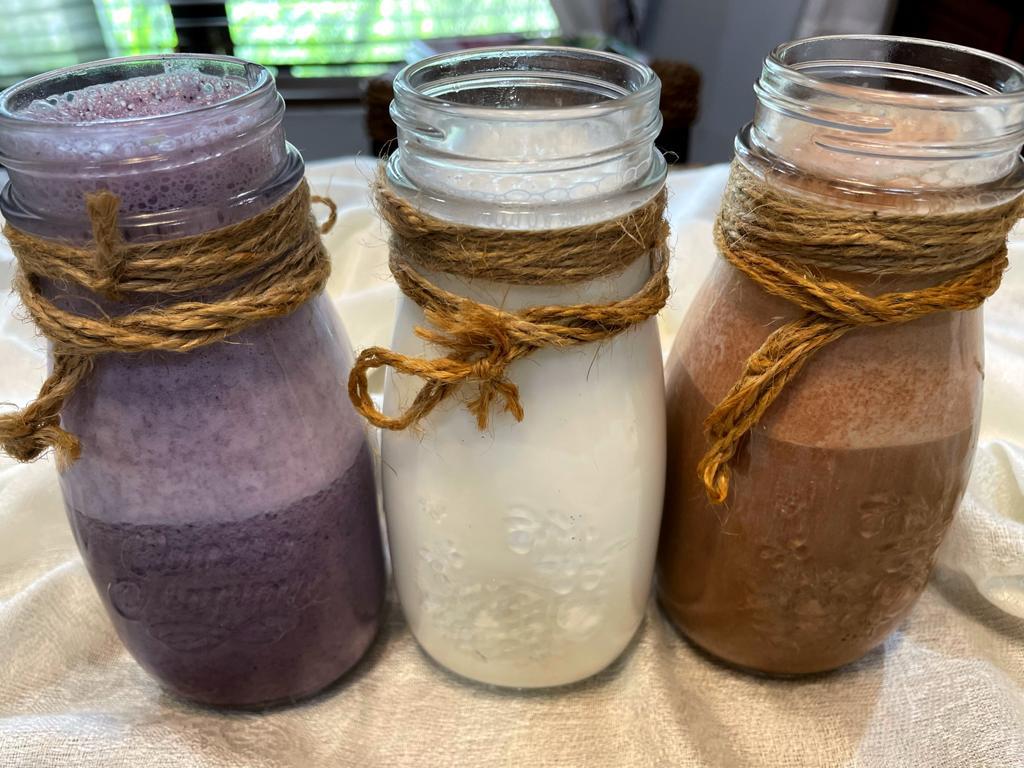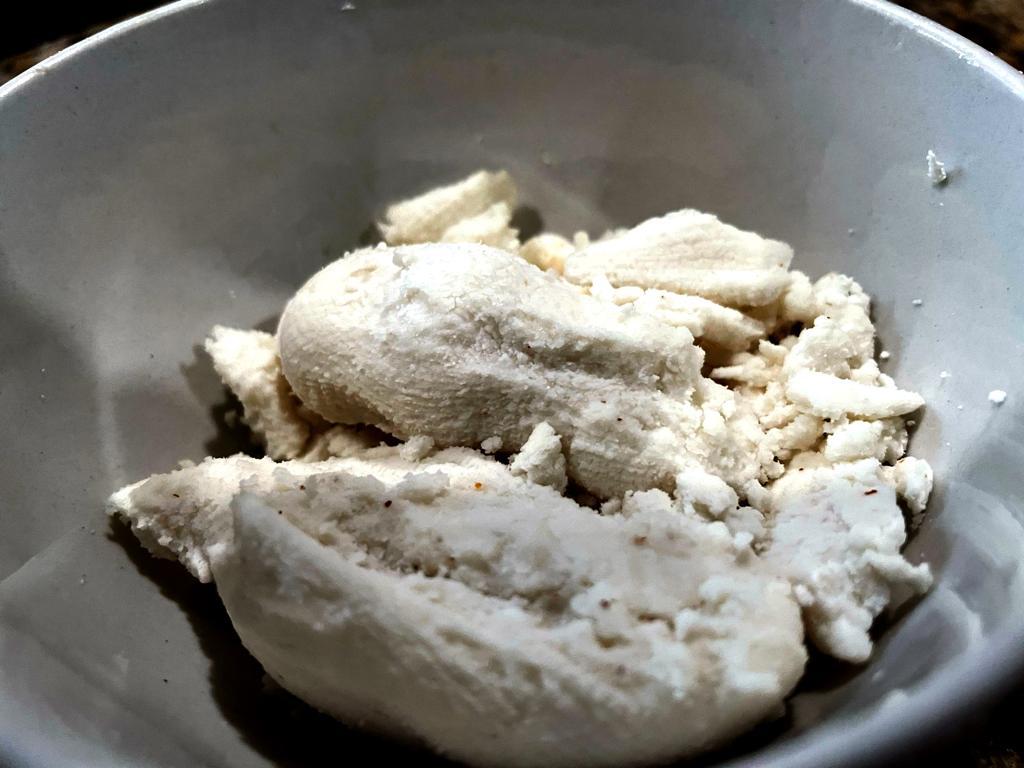- Course: Beverage
Almond milk is a nutrient-dense, nut-based beverage that has grown in popularity over time.

Because almond milk has a mild flavor, many individuals prefer it to other plant-based milk alternatives. It can be used in place of dairy milk in coffee, porridge, and baking dishes.

Raw almonds are soaked, ground, and strained to make almond milk. Commercial almond milk may include elements including calcium, riboflavin, vitamin E, and vitamin D to increase the nutritional value of the drink.
It’s ideal for those who are unable or unable to consume cow’s milk (a dairy product), but many people consume it simply because they enjoy the taste.
Almond Milk Recipe
Almond milk produced at home is creamy, tasty, and completely customizable! It’s great on cereal, in baking, and straight-up with baked products.
Ingredients
- 1 cup Almonds
- 1/2 tsp salt
- 5 cups filtered water
- 1 tsp vanilla extract, opt
Variations of Almond Milk
- 1/2 cup blueberries
Variations of Almond Milk
- 2 tablespoons carob powder
- Preparation: 20 min
- Cooking: 5 min
- Ready in: 25 min
Instructions
- 1. In a high-powered blender, combine the soaked almonds, water, salt, and any additional add-ins (optional) and process until creamy and smooth. To get the most out of your almonds, leave it running for at least 1-2 minutes.
- 2. Using a nut milk bag or a thin dish towel, strain the mixture. Simply place a clean dish towel over a mixing bowl, pour in the almond milk, collect the corners carefully, and raise up. Squeeze again until all of the liquid has been removed. The pulp can be discarded or saved to use in baked goods (especially crackers). More ways to use almond pulp can be found here.

- 3. Refrigerate the milk in a jar or a covered bottle. It will keep for up to 4-5 days in the refrigerator, but it is best when it is fresh. Shake well before drinking, as it tends to separate.
Variations of Almond Milk
- Simply add the carob powder to the blend after straining to make carob milk.

Variations of Almond Milk
- Add the blueberries or fruit of your choice to the blender to make berry milk.

Notes

RECIPE NOTES
Using leftover almond meal: You may use the leftover almond meal straight in porridge, smoothies, and muffins. You may also spread it out on a baking sheet and bake it until thoroughly dry in a low oven (2 to 3 hours). Dry almond meals can be frozen and used in baked items for several months.
Storage: Refrigerate the almond milk in airtight containers for up to 2 days.
Nutrition (1 of 10 servings)
- Serving: 1 half-cup serving
- Calories: 31
- Carbohydrates: 1.2 g
- Protein: 1.1 g
- Fat: 2.7 g
- Saturated Fat: 0.2 g
- Polyunsaturated Fat: 0.7 g
- Monounsaturated Fat: 1.7 g
- Trans Fat: 0 g
- Cholesterol: 0 mg
- Sodium: 4 mg
- Potassium: 40 mg
- Fiber: 0.7 g
- Sugar: 0.2 g
- Vitamin A: 0 IU
- Vitamin C: 0 mg
- Calcium: 10 mg
- Iron: 0.2 mg
Uses of almond milk
Almond milk is a flexible beverage that may be used to replace dairy milk with ease.
Here are some suggestions for including it into your diet:
- as a nourishing and pleasant beverage
- cereals, mueslis, and oats
- in your hot chocolate, tea, or coffee
- in fruit smoothies
- in baking and culinary, such as muffin or pancake recipes
- Soups, sauces, and salad dressings
- in ice cream made from scratch
- almond yogurt (homemade)
Health benefits of almond milk
- Almond milk is a dairy-free, vegan beverage that has been gaining popularity in recent years. Fortified variants of fortified milk can be a rich source of vitamins A, D, and E, as well as calcium, and are a diverse healthy option to dairy milk.
- Vitamin E, a disease-fighting antioxidant, is abundant in almond milk. It’s typically supplemented with calcium and vitamin D during processing. It is, however, a poor source of protein.
- Unsweetened almond milk is naturally low in sugar and high in vitamin E, a powerful antioxidant that helps fight disease. Sweetened almond milk, on the other hand, can be high in sugar.
- Almond milk is low in protein, lipids, and nutrients necessary for an infant’s growth and development. Furthermore, many processed kinds contain sugar, salt, flavors, gums, and carrageenan, among other things.
- Choose almond milk that is unsweetened, unflavored, and fortified with calcium and vitamin D to get the maximum advantages.
Bottom line
Almond milk has become increasingly popular as a pleasant and nutritious alternative to dairy milk. It may also benefit your skin and heart.
Nutrients like calcium and vitamins A, E, and D have been added to several commercial almond milk variants. When people move from dairy milk to almond milk, fortification ensures that they get all of the essential elements that milk normally delivers.
Almond milk is also good for most people who have lactose intolerance, a dairy allergy, or renal disease, as well as vegans or those who avoid dairy for other reasons.
Try putting it in your cereal or coffee, blending it into smoothies, or using it in ice cream, soups, or sauces dishes.
- Per serving
- Energy: 31 kcal / 130 kJ
- Fat: 2.7 g
- Protein: 1.1 g
- Carbs: 1.2 g

So beautiful
Thank you for sharing this interesting information,I am getting importance and goodness of using natural milk